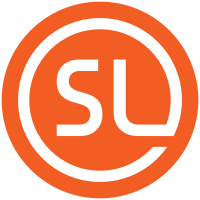Recommendations on building a foundry website

Igor Petrovic
Posts: 338
What approach would you recommend for a simple foundry site: coding in HTML/CSS from scratch, CMS like WordPress, website builders, or something else?
A simple foundry site showcasing fonts with the usual type sampler and a few classic pages & functions (blog, about us, FAQ, licensing, newsletter subscription .etc)
Option A: Using external payment processing like Gumroad
Option B: Selling fonts directly from the site
A simple foundry site showcasing fonts with the usual type sampler and a few classic pages & functions (blog, about us, FAQ, licensing, newsletter subscription .etc)
Option A: Using external payment processing like Gumroad
Option B: Selling fonts directly from the site
Tagged:
0
Comments
-
I highly recommend Fontdue. I’ve only used the ecommerce portion but it has the tools to handle the rest of the website.3
-
My website uses Fontdue as well, incorporated into a site I built with Webflow. The relative ease of both of those tools meant I could figure out how to design and construct it myself, which I enjoyed. Of course both tools mean ongoing charges, but it will take many, many months for those to add up to what a custom from-scratch solution would have cost me up front, I figure.7
-
I have a squarespace website with Shopify Buy Button for e-commerce. I also hired a guy to write a Javascript/CSS type tester.
Not as pretty as Fontdue and lacking some options for sure, but only ~$250/year + stripe/paypal fee. Works decently. Will probably upgrade to Fontdue or lttrshop or something similar at some point, when my library contents justify the fees.
3 -
The current FontLab site is also built in Webflow. I was very impressed with Webflow, although I never got half as good at it as Adam and Yuri. Fontdue integrates with Webflow, so if I were doing a foundry site I would definitely look at that combination.
For TheFontDetective.com (non font sales) site I went with an Elementor-based theme on top of WordPress. If I had it to do over again, I would avoid Elementor, which is an easy-to-use design-focused thing that lives on top of WordPress; most of the cool design stuff it did was substantially added into later versions of WordPress, and it made some things more difficult to customize and maintain. The site does look slick, though, and I did most of it myself.
2 -
I designed and coded my site (justinpenner.ca) including the type tester, but my e-commerce is just links to Gumroad pages. A few foundries like Delve, Nuform and Cinetype also use Gumroad.
Fontdue seems like the most popular option these days, but LttrShop and FoundryCore look great, too.
See also: https://typedesignresources.com/#e-commerce-platforms
3 -
As a first step, I recommend mapping out what you want to do with the site, what you might want to do with it in future, and figure out what features are essential, nice to have, or not important to you. In terms of future development, also consider whether you want somethng you can build on or something you plan to replace.
1 -
To keep costs low in the beginning and for full flexibility, I built Tipofili as a static site using Jekyll (free), hosted on GitHub (free-ish), and paired it with Fontdue ($640/yr).
Fontdue can be paired with pretty much anything that allows you to inject some JS. You could probably add it to Squarespace, Cargo, etc.
To more directly answer your question: I would say to start with what ever you are most comfortable with. The lower the barrier of entry, the easier it’ll be to get things off the ground.6 -
Just to add to what everyone else said: you can even launch a foundry site with super minimal HTML and an email link. Stripe (or any competitor of theirs) allows you to send invoices manually, which will be absolutely no problem for you since you won’t get hundreds of requests right away. Once you do, you’ll have the funds for a more serious solution.
Grilli Type started with a Wordpress site and manual Paypal links back in 2009. After we got a payment we manually sent out the fonts whenever we were back at the computer. That might not be acceptable anymore in 2023, but worked for us back then.
Long story short: just launch. Figure out how to grow the features that are most needed over time.18 -
Would the WordPress site used to showcase fonts be slow?
I would use Gumroad as an external solution for purchases, but I still would like to have a live type sampler on it. Is loading all those custom fonts a problem?
Also, I tend to use a lot of promo images (up to 20 per font) and some of them are quite large because of the style and size (4 Mb). Would the gallery be slow?
Also, is there anything else that makes WP inconvenient for the foundry site?
0 -
WordPress or not, those are legitimate concerns, to which generic solutions can be applied. You can use subsetted fonts (load minimal font to show your "quick brown fox" text, swap in a fuller font upon editing) and you can optimise and lazy load images.
(If an image is still 4MB after optimising, I'd reconsider using it!)1 -
On Framer, a friend of mine created a new theme for type foundries. It went online yesterday, so I haven't had a chance to try it yet, but type tester and inspector looks very clean.You can find the theme on here.4
-
Thanks, Muhittin. It looks pretty clean and nice, especially the tester. I am glad someone provided such a solution and hope it will pay off for the developers/designers!
If some of them are reading this, I would just have a point:
— Once I click on the BUY button (on the main product page) I am taken to the purchase page where I can choose to buy a full pack or individual styles. I had a problem identifying what's clickable there (it turns out it's the price). I would expect buttons here.
On that matter, the main BUY button would probably better work if not black (as the rest of the UI) since it's CTA.
Anyway, I wish them all the luck!1 -
Igor Petrovic said:— Once I click on the BUY button (on the main product page) I am taken to the purchase page where I can choose to buy a full pack or individual styles. I had a problem identifying what's clickable there (it turns out it's the price). I would expect buttons here.
I get the impression that this theme doesn’t integrate an e-commerce solution, hence why that checkout experience is a little strange.
Would love to be wrong though!
EDIT: Based on this Twitter video, it seems to confirm that you need to individually link out each style to a purchase page elsewhere. (Regardless, agree that the whole button/row should be clickable.)
0 -
The way Fontdue handles embedding seems to avoid the biggest security hole with every other foundry website I’ve examined.
0 -
With all due respect to Fontdue, it is too expensive for a wide range of independent type designers who are trying to emancipate themselves from big stores like My Fonts and Creative Market.
Having externalized e-commerce (which might be challenging when it comes to offering clear license packages) and front-end test rendering (as the only solution; it would be great to pick front or back-end since some foundries prefer front-end despite font files exposure) is not perfect.
But I see this as an important first step and hope that developers will earn enough so they can develop it further.2 -
I really like your website. Can you please tell me which e-commerce technology you are currently using? Was your website programmed in HTML 5 yourself or by a design agency?Thierry Blancpain said:Just to add to what everyone else said: you can even launch a foundry site with super minimal HTML and an email link. Stripe (or any competitor of theirs) allows you to send invoices manually, which will be absolutely no problem for you since you won’t get hundreds of requests right away. Once you do, you’ll have the funds for a more serious solution.
Grilli Type started with a Wordpress site and manual Paypal links back in 2009. After we got a payment we manually sent out the fonts whenever we were back at the computer. That might not be acceptable anymore in 2023, but worked for us back then.
Long story short: just launch. Figure out how to grow the features that are most needed over time.
0 -
The site is from 2016 and quite outdated but it does the job, for now. We’re using a custom-developed backend and frontend. Under the hood it uses a PHP backend (how outdated!) and an AngularJS frontend (also a little outdated), but again: it does the job.Typedesigner said:I really like your website. Can you please tell me which e-commerce technology you are currently using? Was your website programmed in HTML 5 yourself or by a design agency?
We designed it ourselves, I developed the frontend HTML/CSS and my friends at https://what.digital coded the backend and transformed my static frontend into one that’s fed by the backend information.
But I really don’t think that a new foundry needs all of that. As I said above, a simple site showcasing the available typefaces is well enough to start with, you don’t even need ecommerce—although it’s certainly helpful.4 -
Hello TypeDrawers,
Does anyone know of a web designer experienced with the Fontdue platform who could assist us?0 -
Igor, I use Adobe Portfolio. The works I add to Behance automatically go to the portfolio. I just bought a domain and connected it to Adobe Portfolio, and wherever I sell, I just put links there. Alternatively, there is Tilda.cc. If you want look, our mutual friend Yulia Gonina's website is made there. Tilda's prices seem reasonable and I'm thinking of using it. But when? I don't know.

1 -
We went the custom route, and launched our new website on Monday. It is definitely the more expensive and time-consuming approach, but meant we had a lot of flexibility in developing a back-end that fits the kinds of work we do and how we wanted to present it.5
-
@John Hudson I really like your website. Informative, very good presentation of the fonts. I would be interested to know who developed your website and what the price range was for design and development, if I may ask?1
-
Kenneth Ormandy built the back end of our site, based on the Craft CMS platform, and Paul Hanslow contributed a lot of the design direction for the front end. It wasn’t cheap, but that’s very largely because I didn’t have an initial, clear idea of how I wanted it to work. So it took much longer than it should have, and a lot of the functionality was gradually added as I realised what was possible and what we would need. I also changed my mind a few times.
So my recommendation would be to first sit down and make a plan, and draw a map of how you want the site to look and operate. At the same time, make sure that what you build is flexible and extensible, so it can be build upon rather than something that needs to be replaced in a few years.5 -
I recently switched from Squarespace to Webflow to overhaul my website. It has everything I need as a foundry, including payment processing via Stripe and PayPal, and the ability to sell digital goods. To manage font files, I host them on a drive, and customers receive a download link after completing their purchase. Given I have experience with CSS and HTML, I was able to develop a type sampler and incorporate into the website. Webflow is a very powerful and complete tool, but at the same time, it's going to demand good understanding of web development. I think the pricing is reasonable. Overall, I'm very happy with it.
I also have interacted with Fontdue and I think it has everything a foundry needs. With some coding you can customise it and achieve something good if all you need is a basic site to sell fonts. But if you want to add more sections and content, it definitely needs to go in conjunction with Webflow or Squarespace, which adds to the running cost.4 -
Whichever technology you use, my recommendation is that you make the “add to cart” or “Buy” button clearly visible. When I was researching the top foundry sites for the seminar I gave in December I was surprised by how difficult it was to actually buy the fonts on some foundry sites.7
-
Thanks, Tural. Since posting the original message on this thread I've managed to build a website based on WP. The main pros are it's free and that I plan to use the blog feature regularly.Tural Alisoy said:Igor, I use Adobe Portfolio.
I tried with vanilla HTML/CSS, but at the time I wasn't aware of how simple it might be to utilize PHP to build editable components (header, footer, etc).
Currently, I use Gumroad as an external e-commerce solution. But given the recent dynamics of their business model, I am planning to disconnect even from there and sell directly on request, without automated purchasing.
I don't have any type tester, but offer fonts for testing on request.
I am a small boutique-like store and don't make many sales. It also gives me the opportunity to get to know my customers, discuss the license type they need, and then track usage more easily.
3 -
If you have even a little knowledge, WP is actually very convenient. As for payment systems, Stripe, Skrill, PayPal, if they work in Serbia, you can use one of them. I hope you will be able to build a website as you wish.1
-
I might consider WP e-commerce plugins in the future, per your suggestion. Thanks!0
-
@John Butler, there isn't ever a fool-proof way around using live webfonts (which I still think is the best way to do it). I just tried and I was able to download the full WOFF and WOFF2 files for all the webfonts on a Fontdue site.John Butler said:The way Fontdue handles embedding seems to avoid the biggest security hole with every other foundry website I’ve examined.
In the end, there will always be pirates, and there is nothing we can do to stop people. We just have to believe those who are visiting our font websites are there to purchase rather than steal.1 -
Yes – it's impossible to completely prevent webfonts being downloaded and we don't make any such guarantee, but we add hurdles on Fontdue to make it more difficult for the average designer to get the files from the foundry site.myersjj said: I just tried and I was able to download the full WOFF and WOFF2 files for all the webfonts on a Fontdue site
1 -
John Hudson said:
So my recommendation would be to first sit down and make a plan, and draw a map of how you want the site to look and operate. At the same time, make sure that what you build is flexible and extensible, so it can be build upon rather than something that needs to be replaced in a few years.Having experience as both a designer and developer, I always give clients this bit of advice: Anything will take 10 times as long to implement as it will take to design.This discourages "developing to see it", because it just isn't efficient. We can argue about the factor... more realistically it'll be 5 times rather than 10, but the idea that seems to be hard to get across is that developing does take considerably more time than designing something, and a designer or you as a product owner should be able to anticipate all aspects, not just a few select screens. The flow in a backend? Design it first and see. The checkout experience? Design it first and see. A mobile view that "just stacks things"? Design it and see it. Yes, your designer may huff and puff for having to design states and modals and edge cases, but it still will be 10 times as much to implement all those just to find out what and how it works, and then change it. And there is a distinction to be made as well between designing and wireframing... you can get away with designing key views, but you cannot get away with not designing the flows.4
Categories
- All Categories
- 46 Introductions
- 3.9K Typeface Design
- 487 Type Design Critiques
- 564 Type Design Software
- 1.1K Type Design Technique & Theory
- 656 Type Business
- 861 Font Technology
- 29 Punchcutting
- 520 Typography
- 119 Type Education
- 324 Type History
- 77 Type Resources
- 112 Lettering and Calligraphy
- 33 Lettering Critiques
- 79 Lettering Technique & Theory
- 558 Announcements
- 94 Events
- 114 Job Postings
- 170 Type Releases
- 179 Miscellaneous News
- 276 About TypeDrawers
- 54 TypeDrawers Announcements
- 120 Suggestions and Bug Reports















